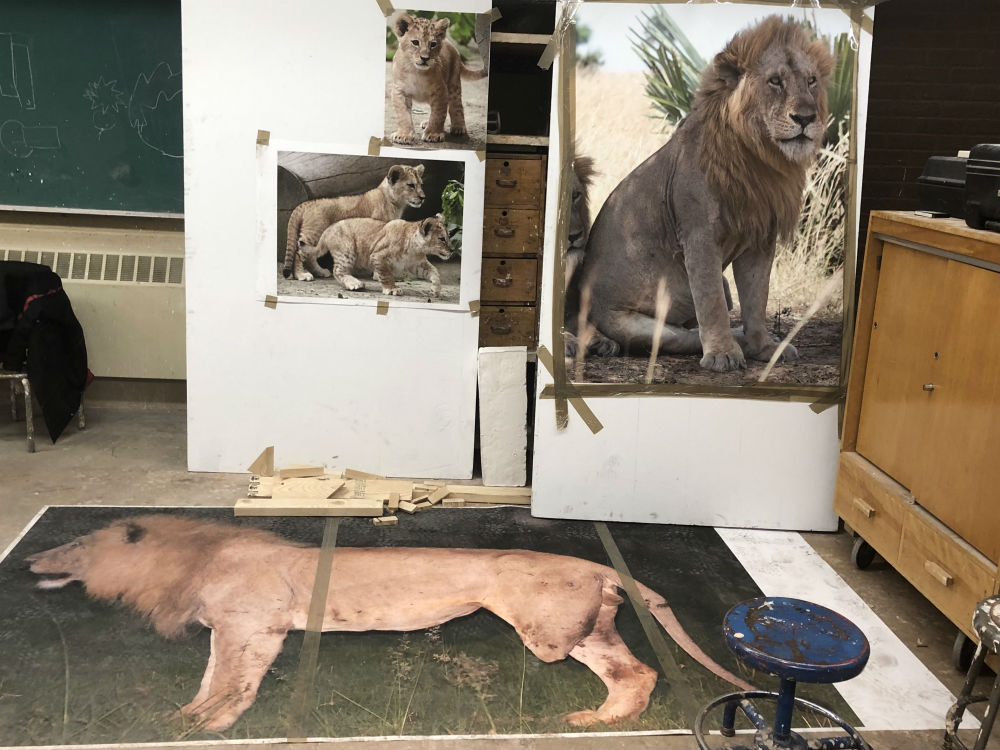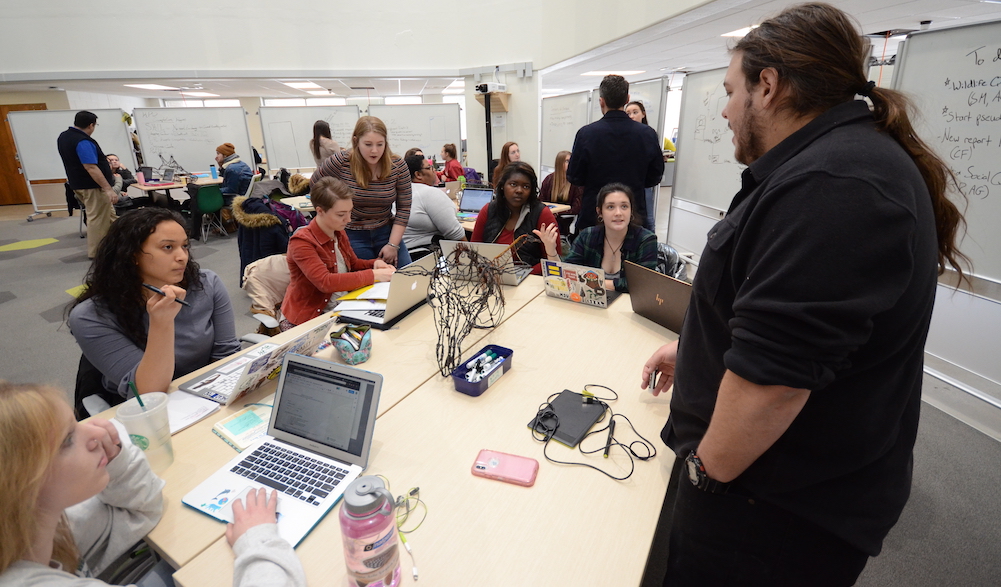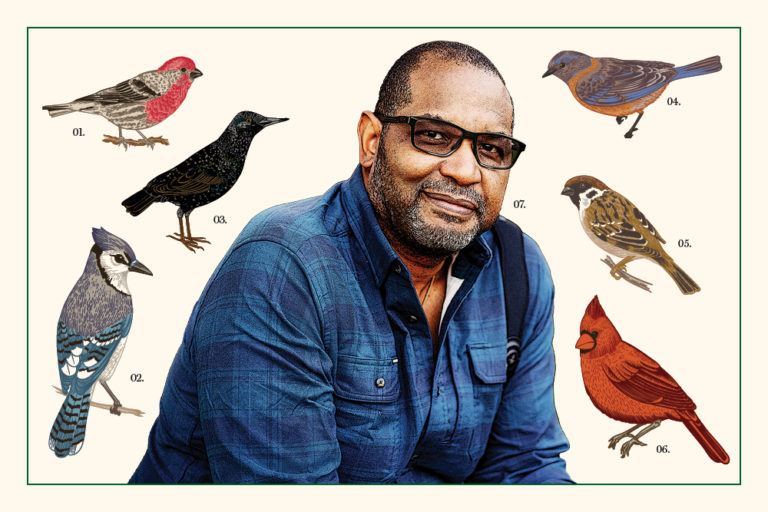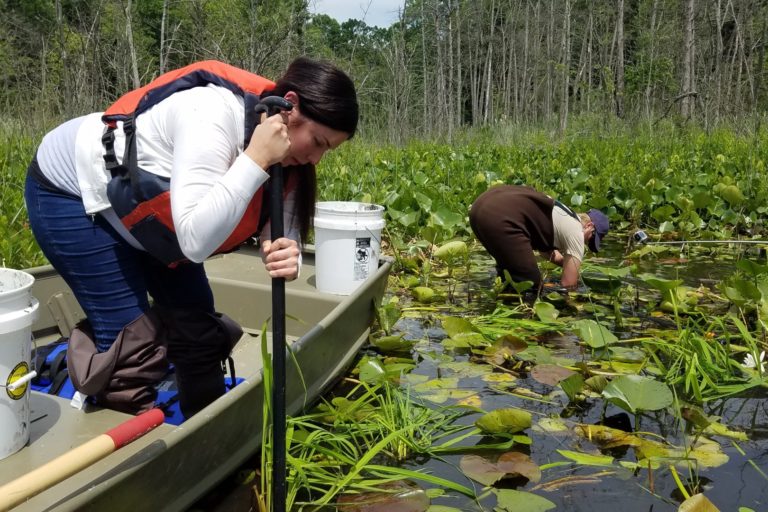
Michigan State University students, faculty, and researchers are the creators and driving force behind a new exhibit and one-of-a-kind sculpture now on display at the Detroit Zoo.
The “Snares to Wares Initiative: Capacity for Change” exhibition opened May 8 in the Detroit Zoo’s Wildlife Interpretive Gallery and will be available for viewing until March 2020.
The centerpiece of the exhibit is a life-size lion sculpture made from illegal snare traps that were removed from a national park in Uganda as part of MSU’s Snares to Wares Initiative. The wire snares are removed to prevent wildlife from being injured or poached. These snares are then turned into pieces of art, which are sold. Currently, snare art sculptures are for sale via the Initiatives website (snarestowares.org) as well as at MSU’s Surplus Store and the Detroit Zoo’s Zoofari Market. Proceeds support community artisans and wildlife conservation.
We were able to utilize our skills as liberal arts majors to create something meaningful that will be seen by more than one million people at the Detroit Zoo.
CAROLINE JOHNSON, PROFESSIONAL WRITING MAJOR
This initiative created a life-size snare art giraffe last year, which is now displayed inside the IQ Building located on the southside of MSU’s campus at 775 Woodlot Drive. After the giraffe was unveiled in April 2018, the Detroit Zoo contacted the Snares to Wares Initiative requesting a similar sculpture be created for the zoo.
Sculpture Inspiration and Creation
Commissioned by the Detroit Zoo, leaders, students, and friends of the initiative came together to create a life-size lion sculpture.
Richard Tanner, senior Studio Art Sculpture major, teamed up with Sophia Jingo and Charles Settler, head artisans from the Snares to Wares Initiative, to create the piece. Tanner and Jingo, along with artisan Mutalib Ngomojik, had built the giraffe sculpture for the IQ Building.

The snare art lion is based off a real lion, called Butcherman, who once roamed Murchison Falls National Park near Pakwach, Uganda, where the Snares to Wares Initiative began. Several years ago, Butcherman’s leg became trapped in a wire snare, and when park officials found him, they had to perform emergency surgery in the field to amputate his leg.
Butcherman recovered and survived three more years with only three legs and the help of other male and female lions. Right before the Snares to Wares Initiative was founded in 2015, Butcherman and his son, Bosco, disappeared from Murchison Falls and haven’t been seen since.

sculpture facility, which helped the artisans in creating the snare art sculptures.
“We want to put [Butcherman] on a pedestal,” Tanner said, “to show that he sacrificed something for our awareness.”
To create the sculptures of Butcherman and his cubs, Jingo and Settler traveled from Uganda to MSU’s campus where they worked with Tanner from March until May. They utilized the Department of Art, Art History, and Design’s sculpture facility. Professor Laura Cloud, Sculpture Coordinator, and Michael McCune, Technical Support Staff, also helped.

The piece sits on a wooden frame made from reclaimed wood at MSU. The frame was built by the MSU Shadows Collections, which reclaims downed trees from campus and works with artisans to build furniture.
“You have the sculpture built with the snares from Uganda. You have a base built with the fallen trees from Michigan State,” Tanner said. “It’s a magical thing really if you think about it.”

Snares to Wares Course
Students enrolled in the Snares to Wares Initiative course also developed materials, such as graphics, posters, and videos, to be displayed with the sculpture. The course was led by Robert Montgomery, Assistant Professor in MSU’s Department of Fisheries and Wildlife and Director of the RECaP Laboratory, and Ron Iwaszkiewicz, Instructor and Specialist in the School of Packaging. They were joined by four student coaches – Abby Pointer, Haley Abbas, Waldemar Ortiz, and Travis Wesenberg – all alumni from last year’s course.
Professional Writing students Caroline Johnson and Kara Headley developed a video for the exhibit, which features the three artisans.
“I am so grateful for the Snares to Wares Initiative and the College of Arts & Letters for providing us with the resources and support to make this video,” Johnson said. “We were able to utilize our skills as liberal arts majors to create something meaningful that will be seen by more than one million people at the Detroit Zoo.”
Other students in the course created posters for the “Snares to Wares Initiative: Capacity for Change” exhibition that provide additional information about Butcherman, the artisans, and Snares to Wares.
The Snares to Wares Initiative course, positioned in MSU’s Hub for Innovation in Learning and Technology, is open to all majors every spring semester as an Integrated Arts & Humanities (IAH) or Fisheries and Wildlife (FW) credit. The course begins by familiarizing students with conservation issues in East Africa, including subsistence poaching, which is the act of hunting without a permit. Students then learn about the solutions the Snares to Wares Initiative offers.

The initiative partners with local law enforcement to collect the wire snares from Murchison Falls National Park. These wires are given to artisans, some of whom are former poachers, to create art pieces to be sold. The artisans also are paid for their work.
New Conservation Club
The Snares to Wares Initiative currently is developing a registered student organization, called iCON, to provide new innovations for conservation, such as the Snares to Wares Initiative.
“There is only so much that can be done by a classroom full of undergraduate students, so the iCON Club will ensure that each initiative is continuing to grow even when the course isn’t in session,” said Brendan Mitchell, Alumni Outreach Chair of the club and former student of the Snares to Wares course. “This student organization also will run fundraisers and increase on-campus awareness to benefit these initiatives and educate people on the missions of Snares to Wares and other conservation initiatives.”

iCON will be open to all MSU students in fall 2019. The club is an opportunity for students who are interested in learning more about conservation to participate in solutions to conservation problems.
To learn more about the initiative, visit the Snares to Wares Initiative website or follow them on Facebook, Twitter, or Instagram.


